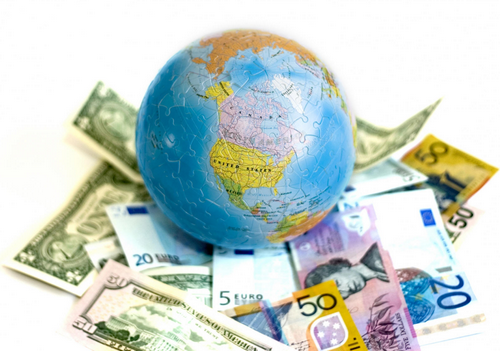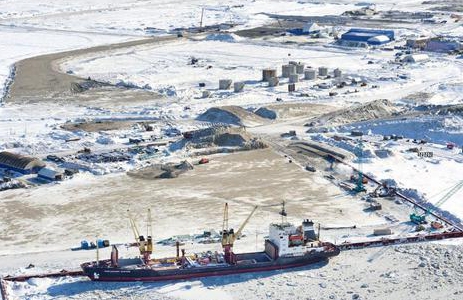National wealth is one of the most important socio-economic categories. It characterizes the level of development of the country's economy, its potential. We consider it in more detail below. 
general characteristics
The composition of national wealth includes:
- Natural resources.
- Spiritual and material values.
The concept of national wealth was one of the first macroeconomic categories defined in economic theory. Its analysis was carried out by European economists in the 17th century. Indicators of national wealth acted as indicators of the accumulated results of previous production cycles, characteristics of power and level of economic development of the state economy. Today, the study of the measurement features of this institution is of global importance for the effective implementation of business on an international scale and within a specific country.
Theoretical aspect
National wealth is the common result of a continuously repeating social production process throughout the history of formation National economy. In accordance with the concept of a balanced economy, this category includes a set of material goods that are at the disposal of society on a certain date. These values were created by human labor for the entire previous period of development of civilization. In the framework of the system of national accounts, national wealth is defined as the sum of net capital owned by all business entities. Thus, it includes not only material resources. An important component are also financial assets national wealth, as well as intangible assets (licenses, copyrights, etc.). Along with this, monetary obligations are deducted from this complex. 
Narrow and broad definition of a category
National wealth reflects everything that the population owns to one degree or another. So the category is considered in a broad sense. In the framework of this approach, the structure of national wealth includes material wealth, climate, natural resources, works of art, and so on. However, counting all these objects is problematic due to a number of objective reasons. In this regard, the economic analysis uses a narrow interpretation of the category in question. In accordance with it, national wealth includes everything that is somehow mediated by the work of people and can be reproduced. This institution, in other words, is a complex of cultural and material goods that are accumulated in a particular country throughout its history at a certain point.
Formation Features
National wealth is directly related to the release of a social product and reproduction. Due to the development of these components, the number of values is increasing. The formation of wealth, thus, is carried out due to the excess of the produced product over current consumption in a given period. There is also feedback. It consists in the fact that the size and structure of national wealth directly affect the rate and magnitude of the growth of the social product.
Components
In economic theory, the following elements of national wealth are distinguished:
- Fixed and circulating production assets.
- Material reserves and stocks.
- Non-productive funds.
- Natural resources.
As the first and most important component, production assets should be noted.Their contribution to national wealth is very substantial. The production assets include fixed assets. The level of their technical development determines to a large extent the possibility of an increase in the social product. The volume of national wealth also depends on working capital. These include objects of labor. Revolving funds make up about a quarter of the fixed assets. 
Inventories and reserves
They play a stabilization role in the economy under adverse conditions. These components determine the continuity and stability of the production process during natural and market disasters. Particular attention is paid today to the size of insurance stocks and reserves. As the practice of advanced industrial countries shows, these components of the system should be sufficient and make up at least a quarter of the total economic potential.
Non-production assets
This is another major element of national wealth. Non-productive components include the state housing stock and institutions of a socio-cultural orientation. This classification is considered conditional in a certain sense, since housing is also included in the category. At its core, it should relate to household property. National wealth statistics developed countries selects the last as a separate line. To household property, in addition to housing, include consumer durables (furniture, household appliances, and so on).
Natural resources
Without this component, it is also impossible to accumulate national wealth. Within the framework of this category, we are not talking about all natural resources. Of significant importance are only those that are directly involved in the economic turnover or have already been explored and may be involved in it in the near future. 
National wealth assessment
The approach that the classical school uses in its review of the category today requires substantial additions. The fact is that the main conclusions formed in the general economic theory regarding national wealth were formed on the basis of real life needs. They, in turn, were dictated by the period, which is called the industrial. However, today civilization is at the stage of transition to another, qualitatively new stage. Of course, this requires a different approach to all aspects of life, including the sphere of national wealth. Society in modern conditions is characterized by at least two fundamentally important points:
- High informatization.
- Qualitative growth in wealth.
The fact that society must enter or begin the transition to global informatization became clear as early as the middle of the last century. Social and economic development puts this task in the center of the system of services and production. After the advent of computer technology, it became clear that business and scientific-technical information acts as not only a decisive factor in economic and social development, but also one of the main components of national wealth.
Formation of the Institute in the Russian Federation
The national wealth of Russia includes many components. Within the framework of the complex under consideration, 3 main categories should be distinguished that correspond to the interconnected life support systems of the country. These include, in particular:
- Farm capital. It is divided into its own (property), technological and financial resources.
- Resource potential of territories. It, in turn, includes a raw material base, land-water and natural-ecological reserves.
- Values corresponding to the working potential of the population. They are divided into spiritual, cultural, intellectual and human resources.

The leading place among these components undoubtedly belongs to natural resources.Less than 3% of the total population of the Earth lives in Russia. At the same time, 35% of the world's resources and more than half of the strategic raw materials of the planet are concentrated in the country. With a total assessment, each Russian is richer than an American by 3-5, and a European by 10-15 times. The specificity of the mineral resource potential of the Russian Federation lies in its complexity and scale. No other country in the world has such a spectrum and volume base: from coal, gas, oil to almost all non-metallic and metallic minerals.
Analytic data
Statistics of national wealth in the Russian Federation for 2007-2010 indicates a significant increase - almost 70%. Analysis of changes in the internal system of the institute under consideration indicates a consistent decrease in the share of fixed assets, an increase in household property and working capital. In many countries, human capital is one of the main components that shape national wealth. Russia is characterized by the following trends: the cost of the Cheka accumulated over thirty years per capita is $ 14.5 thousand. This is 87 times less than in the United States, 39 - than in Germany, 42 - than in Japan, and 1.3 times - than in China. An estimate of the cost of human capital by the World Bank method amounted to about $ 100 thousand. However, the closer value is considered to be for countries with transformation economies - $ 30.5 thousand. The main reasons for this significant lag in Russia are:
- Low quality of human capital itself.
- Minor investments in the Cheka.
- The negative direction of development that has developed over many centuries. Its priorities were not aimed at human development and improving the quality of life, but at other goals that, due to their unreality, were never achieved.

As a result, if in most countries the quality, cost and effectiveness of human capital increased, in Russia their active decline was observed.
Other current issues
Over the past twenty years, investment in science, education, culture has declined significantly. Indicators are considered among the lowest among countries comparable in terms of potential. In 2010, Russia was in the 109th position out of 186 countries in the ranking of educational spending. An unfavorable situation is also observed in the healthcare sector. According to WHO, the average expenditures of advanced world countries in 2010 amounted to 8.7% of GDP, in Russia - 5.3%. According to these parameters, the Russian Federation is in 115th place in the ranking. America is considered the leader in investing in public health today.
She invests 15.3% of GDP in this area. However, corruption and criminalization still remain the main problems in Russia today. The vast majority of investment in human capital is spent inefficiently, in the wrong areas, is stolen. According to analytical data, the unit of investment in the Cheka in America gives a return 4 times greater than in Russia. Problems are also noted in the field of investment in physical capital: equipment, production facilities, technologies, etc. In 2010, Russia ranked 74th in financing this sector. Over the past few years, the savings rate has been around 20%, while the savings rate is about 30%. A third of the capital is not introduced into the economy due to lack of demand and high risks. The leader in direct investment today is China.
Possible outputs
To ensure non-price growth of domestic GDP to the level of 6-8%, investments of about 40% of the gross national product are necessary. This is twice as much as it is now. However, at the same time, stable GDP growth of the indicated level is possible with a significant improvement in the quality of human capital. An increase in investments in physical means can be achieved by increasing the attractiveness of the regions for foreign and domestic private financing.Improving the quality of the Cheka involves a systematic approach. It consists in investing all its components at a faster pace.
Efficient use of resources
The problems of the distribution of the components of national wealth and their introduction into circulation are very diverse. Given the above information, the main ones can be noted:
- The lack of demand for the Cheka.
- Decrease in the quality of working potential.
- Deterioration of the professional level of staff.
Experts note the high rate of aging of fixed assets, the stagnation of innovative and knowledge-intensive sectors, the destruction of the existing production base. Ensuring stabilization of the socio-economic situation, achieving sustainable, high indicators of economic growth can be realized by synchronizing investment flows that are sent to restore certain areas. Of great importance in solving problems is the comprehensive support of the development of human capital, the preservation of the potential resources of the country's economic system. 
Conclusion
The target setting, which consists in improving the relationship between the components of national wealth, provides for the solution of the tasks of ensuring and structural changes in the national economy. The problem of efficient distribution and use of resources, their security in the future is one of the central issues today. The competitiveness of the country's national wealth will largely depend on its decision. Progress towards these goals depends on the totality of measures that would contribute to increasing the effectiveness of the use of material and resource potential. In this case, restrictions based on the possibilities of implementing each urgent task should be taken into account. In general, the existing problems boil down to the need to ensure an integrated approach to all weakened sectors.








